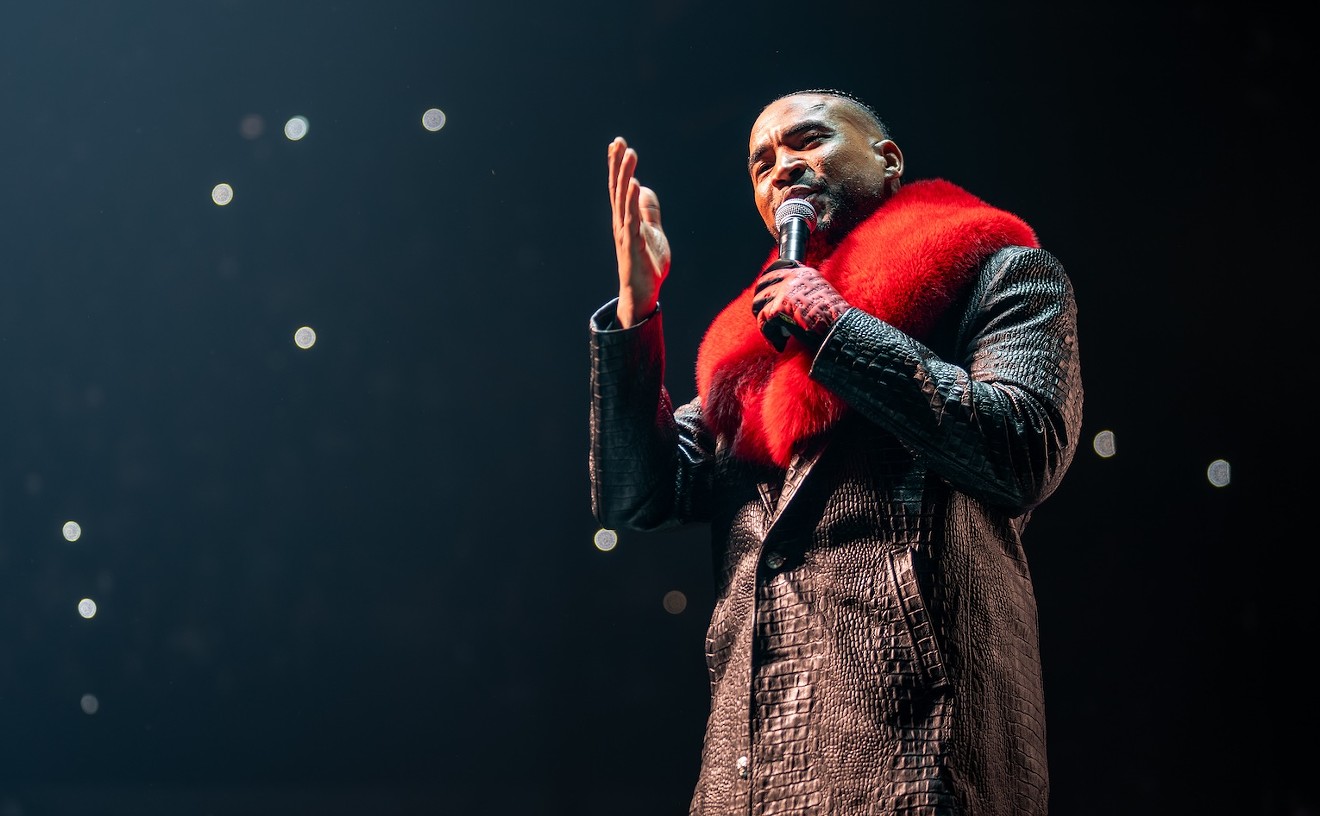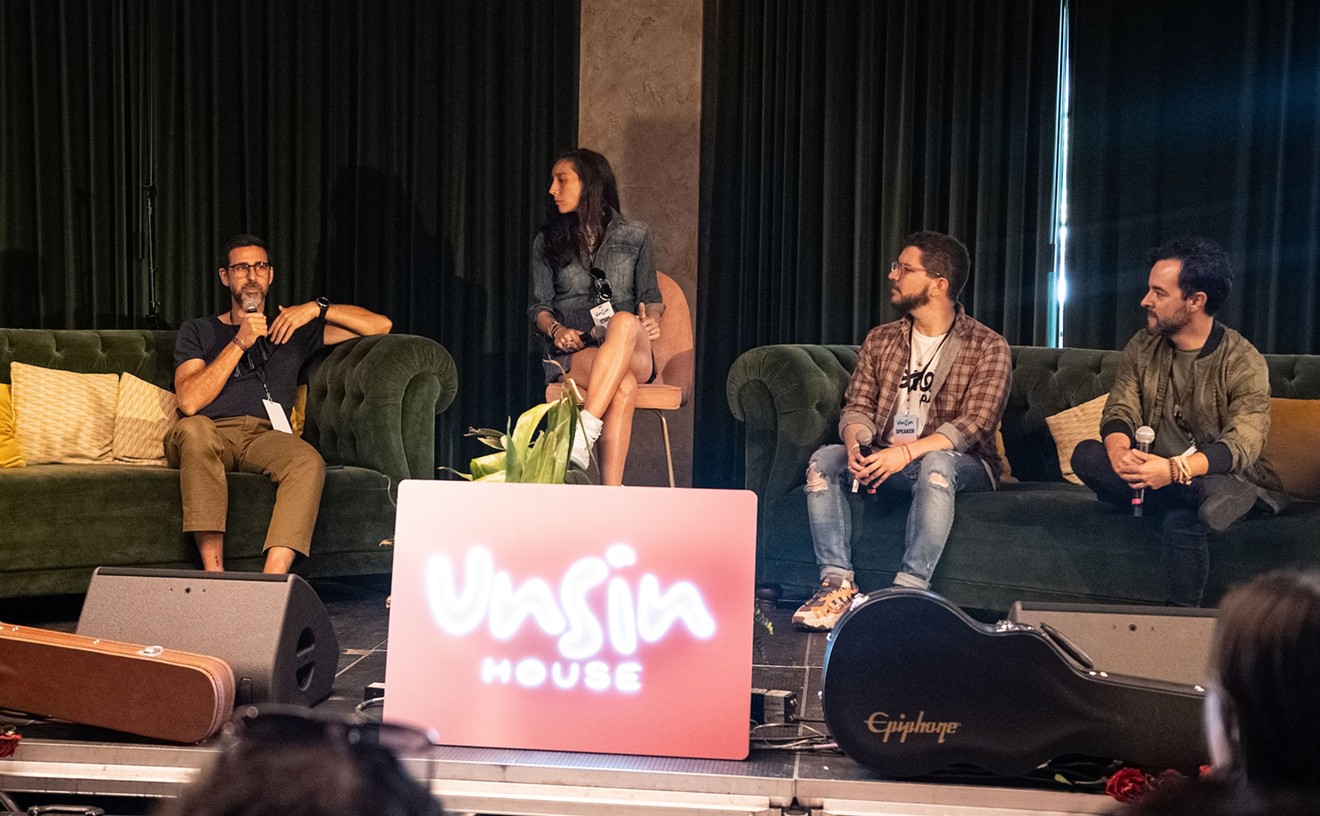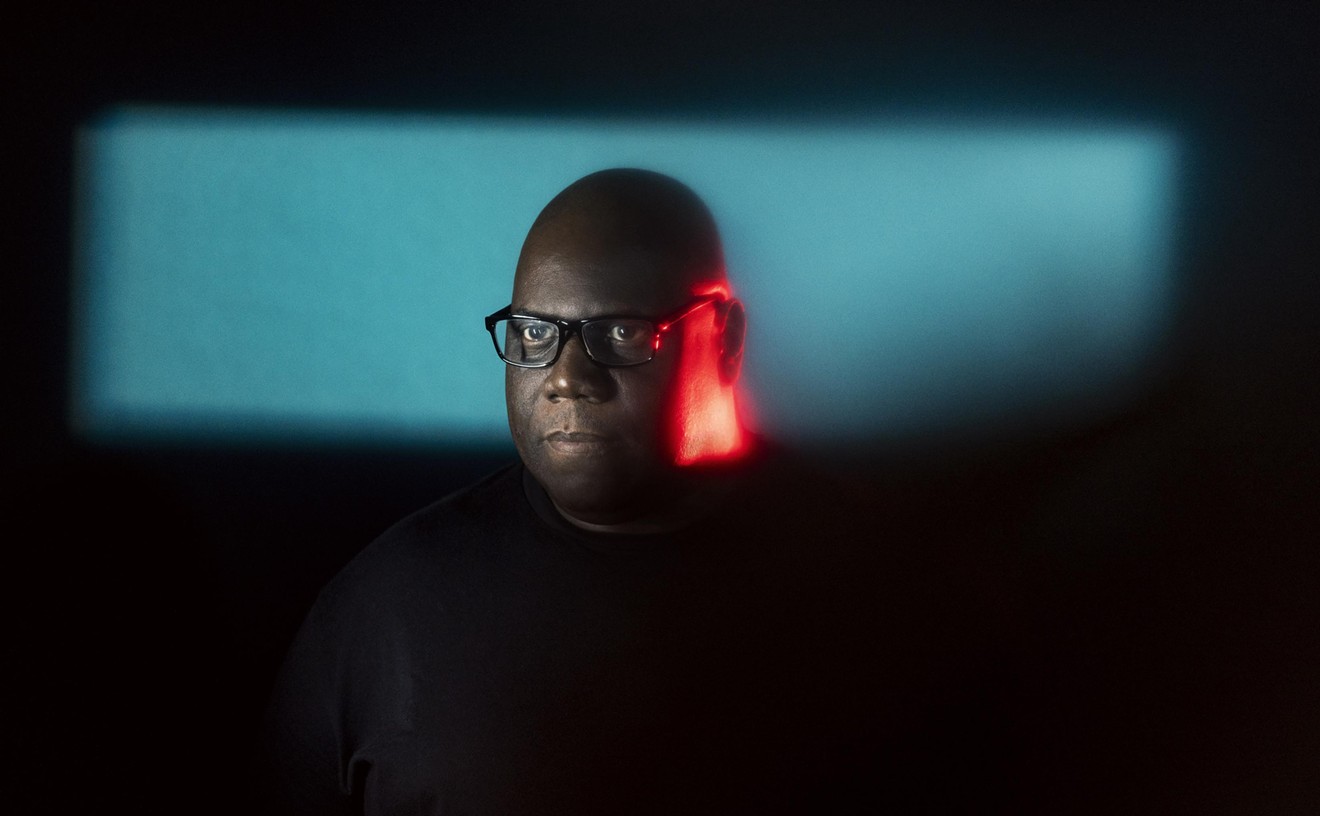Consider the band that once performed in Poland surrounded by impaled sheep heads, later unleashing a literal bloodbath of the fluid collected from the animals. Or ponder the ex-member of that band who dwells near a remote fjord with no plumbing and was once accused of torturing a man who taunted him. These are among photographer Peter Beste's most notorious subjects. Others in Beste's coffee-table tome True Norwegian Black Metal, which was released a couple of months ago, seem to breathe fireballs for fun and scary effect. Still others are snapped posing by the churches they despise.
Of course, by rehashing all of these stories, I'm just feeding into the mainstream media's tried-and-true approach to writing about heavy metal: hysteria. Ask anyone about Norwegian black metal, and they'll likely respond with notions of church burnings, spiky wristguards, and ghoulish face paint.
"It's a one-of-a-kind world over there," Beste says. "The average person's never really seen anything like it, and that's why people are interested. There are so many interesting components — the way the guys look with the makeup and the spikes. The criminal side of it interests others.... Other people are just into the music itself."
The book is above all respectful, a visual feast with knowledge of the scene and just enough distance to appeal to both diehard fans and admirers of arresting portraiture. Beste has accepted the musicians' mythologies and revealed that a large part is self-constructed myth and artifice. But of course, that's the appeal of the genre for many — form, as well as content, and the ability to consume it on various levels of seriousness.
Beste, a highly regarded longtime music photographer, is the first to admit he wasn't a metal fan. He even says this helped him gain the trust of black metal's inner circle, as well as approach the project journalistically. "I found it an interesting subculture, and through my research, I started listening to all the music and did become a fan of some, but not all of it," he says. "I went over there and on a personal level got along with a lot of them. I think the photos communicated what they wanted to communicate, and we saw eye to eye on the final products. If I was a superfan, I think they would have been a little more standoffish or private. The metal media would have a different intention."
After photographing bands such as Gorgoroth, Dimmu Borgir, and Marduk when they played in the States, Beste eventually secured a number of invitations to meet more musicians on their home Norwegian turf. The resulting process was organic, he says. The subjects chose their own clothing and locations. "We would discuss locations, because I didn't know all the special places all over rural Norway," he says. " It wasn't like, We must go to a mountain and take majestic metal photographs. It could be their living room or a majestic fjord somewhere. Then I'd let loose and start snapping — I like to catch the intimate moments."
By the end of the book, what becomes clearest is that the guys under all the face paint and hair are, well, regular guys, with a bunch of face paint and hair. "If you go into it thinking that all these guys are scary and insane, I guess all of them would be surprising," Beste says. "They were all cool for the most part. There were a couple slightly ornery ones, but at the end of the day, they were nice too. I hate to demystify it so much, but there was never any fear or anything."










